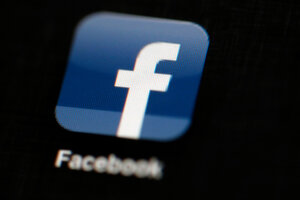Why fewer Facebook ads could mean more revenue
In its quarterly progress report, Facebook said that it won't increase the number of ads in people's newsfeeds going forward, which could dampen its persistent growth. But it has plans to overcome this.

The Facebook logo is displayed on an iPad in Philadelphia.
Matt Rourke/AP
In keeping with its regular practice of beating analyst expectations on earnings, Facebook announced enviable third-quarter growth on Wednesday night. The social media company’s revenue shot up by 56 percent to $7 billion, and its profit for the same time period nearly tripled to $2.38 billion.
Driving the growth is its mobile ad business, said Facebook in an earnings call with analysts. Mobile ads amount to 84 percent of the company’s ad revenue, up from 78 percent in the third quarter of 2015. In dollars that translates to $5.7 billion in mobile ads – 70 percent up from the same period last year – of its $6.8 billion in total ad revenue.
But while newsfeed ads have served the company well, Facebook warns that it may have reached peak ads. It won’t increase the number of ads in newsfeeds next year to avoid turning off Facebook users. In light of this, Facebook executives warned that ad revenue growth might wane next year.
“With a much smaller contribution from this important factor going forward, we expect to see ad revenue growth rates come down meaningfully,” said the company’s chief financial officer, David Wehner, on the call.
Instead, the company will focus on keeping people on Facebook, and its other platforms such as Instagram and WhatsApp, longer to stretch out profitable ad-viewing time. One way it will do this is by encouraging users and advertisers to produce and post more video, which is engaging and can include lucrative ads.
The company said earlier this year that Facebook users watch live broadcasts on the platform three times longer than recorded video, though most of the videos now shared are pre-recorded. Facebook Live was launched to all users this spring. Since then, the number of people "going live" at any given moment has grown by four times, Facebook told analysts.
"People are creating and sharing more video, and we think it's pretty clear that video is only going to become more important," Facebook’s founder and chief executive Mark Zuckerberg said.
Facebook’s advertising growth last quarter exceeded that of its main competitor, Alphabet, parent company of Google. Last week Alphabet said Google’s third quarter ad revenue grew by 20 percent.
According to The Wall Street Journal, Facebook and Google together collected 68 percent of online advertising money in the second quarter of this year. This helped overall digital advertising revenues reach all-time highs in the first half of 2016, according to Interactive Advertising Bureau, a trade group that represents digital advertisers.
But the growth came only from Facebook and Google. The rest of the digital ad industry shrank by 3 percent, according to the Interactive Advertising Bureau.

